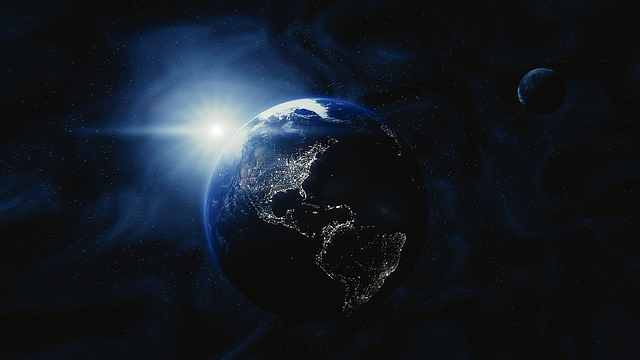*This post may contain affiliate links. This means we may make a commission if you purchase an item using one of our links*
Tectonic plates comprise sizeable chunks of the Earth’s crust that move slowly over the surface; they are composed of both continental and oceanic crust. Not all terrestrial planets have tectonic plates, though some may have possessed them many years ago.
Discover what a planet needs to develop tectonic plates and the reasons why these plates could be the key to the formation of life.
Is Earth The Only Planet With Tectonic Plates?
Table of Contents

Earth is different from the other terrestrial planets in our solar system because it has a large amount of internal heat and liquid water. One of the main reasons why Earth possesses these unique features is that it is quite large for a rocky planet. Its impressive mass has allowed the planet to maintain substantial internal heat over millions of years.
There are two types of planets: terrestrial and gas. Some terrestrial planets have tectonic plates, while gas planets do not.
Planets are composed of different layers. The core is the innermost layer, made up of metals such as iron and nickel. The mantle is the layer that surrounds the core and is made up of silicate rocks. Tectonic plates are located in the outermost layer called the crust, which is made up of a type of rock called basaltic rock or continental rock.
Gas planets do not have tectonic plates because they do not have the crust to contain them. On the other hand, terrestrial planets have tectonic plates because they have the crust to contain them.
Why Would A Planet Have Tectonic Plates?
Plate tectonics is a scientific theory to describe the large-scale motions of Earth’s lithosphere (the rigid outermost shell) and how these movements cause earthquakes, volcanoes, mountains, oceanic trenches, and other features.
These plates are constantly in motion and always moving and shifting. We see this happen all around us as the continents move and change shape over time. This occurs because the Earth’s crust is made up of many different types of rock with different densities, strengths, and melting points. The densities of these rocks are critical because they dictate how much pressure they can take before they break apart.
The plates are composed mainly of lighter materials like granite, so when two plates collide, the heavier material will sink underneath the more lightweight material and create a new plate boundary. This process repeats over time, which is why we have more than one tectonic plate today. These movements over millions of years have shaped the Earth’s surface.
Why Don’t The Other Planets Have Tectonic Activity?

The Earth has been around for a long time and has experienced much tectonic activity. In other words, the Earth is constantly being shaped by the movement of its plates. But what about other planets? Why don’t they experience tectonic activity as well?
For one thing, the Earth is much bigger than some of the other terrestrial planets in our solar system. The mass of the Earth means that it has more heat and pressure inside its core, which is necessary for creating tectonic activity.
That’s not to say that there are no other planets with this kind of activity – Venus and Mars have experienced some tectonic activity in their pasts – but they don’t experience it now because they’re not as massive as the Earth.
Mars is far smaller than Earth (around half the size), which means that over time, it has cooled much faster than Earth.
The lithosphere is a layer of the outermost solid matter divided into two parts: the crust and the upper mantle. While Earth’s internal heat helps to keep the lithosphere fluid, the cool internal temperatures of Mars mean that its lithosphere has become too rigid to be broken down into plates.
So what about Venus? Our sister planet is the most similar to Earth and is almost 95% the total size – why can’t this planet maintain enough heat to support plate tectonics? The reason is that plate tectonics also require liquid water for lubrication; without this, there is nothing to allow the plates to slide past one another.
Does A Planet Need Plate Tectonics To Develop Life?
The question of whether plate tectonics are essential for life to exist on a planet is an interesting one. Scientists may find the answer to this question by studying Earth and Mars, two worlds with very different histories.
Earth is the only planet in the Milky Way with plate tectonics. The movement of these plates has played a crucial role in shaping our planet’s surface and atmosphere over time.
On the other hand, Mars does not have plate tectonics, and scientists believe it never did. The lack of plate tectonics on Mars may be one reason life never developed there, but it is unclear if it is the only reason.
Research published in Physics of the Earth and Planetary Interiors examines the concept of Earth’s uniqueness through tectonic plates and the formation of life, suggesting there could be a link between the two.
Plate tectonics creates optimum conditions for life on Earth because it makes our planet unique.
They allow landmasses to form and create a habitable environment that we can live in; they help a planet to develop life because they recycle nutrients, shape the Earth’s surface, and cause earthquakes and volcanoes.
However, there is much more research for scientists to conduct, and many researchers now suggest that tectonics aren’t a necessary characteristic for a planet to host life.
Summary
Venus and Mars are terrestrial planets but lack the necessary characteristics to maintain plate tectonics. While these geographical features may once have existed, they are currently under tectonic deformation.
For this reason, we class Mars and Venus as having one single plate, so they experience tectonics but not plate tectonics; that’s why we say that Earth is the only planet with plate tectonics.
References
How is Earth the only known planet with active plate tectonics? | Astronomy.com
Does a planet need plate tectonics to develop life? (theconversation.com)
https://www.insidescience.org/news/how-plate-tectonics-could-make-rocky-planets-hospitable-life

